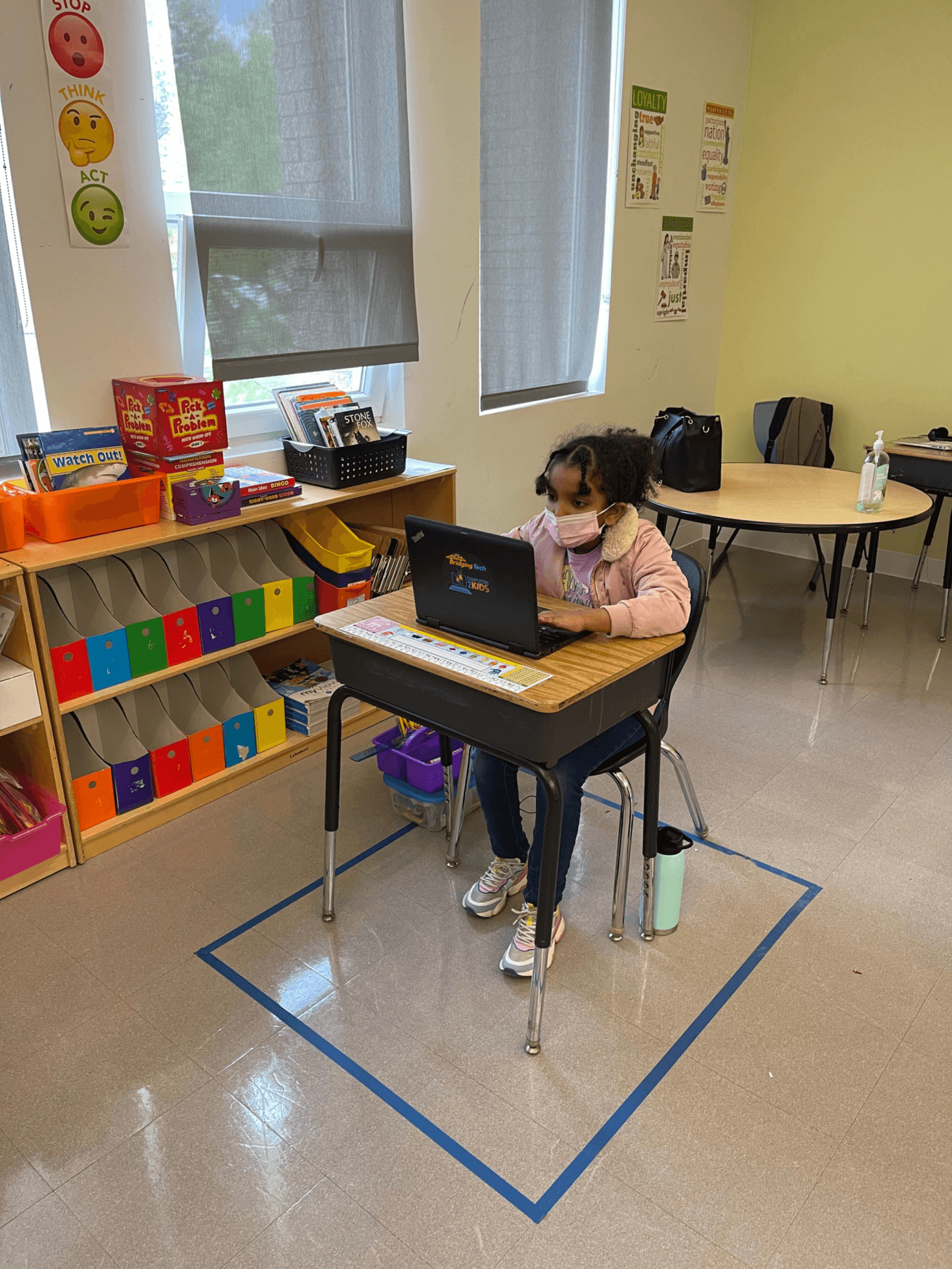
Words by Tess Becker
Technology is becoming increasingly essential for nearly every facet of life. Not having consistent access to the internet and a computer can limit someone’s opportunities and potential in work and school.
Schooling, in particular, had a spotlight shined on the systemic issues plaguing it thanks to the pandemic. As most schools migrated to the screen for classes, students that didn’t have access to a computer, internet, or even just a quiet space to do schoolwork, missed out on massive amounts of instruction.
Those were stories that inspired the founders of Bridging Tech.
Bridging Tech is a non-profit that works to slim the digital divide for students struggling with access to essential technology, primarily helping kids experiencing homelessness get access to computers and educational opportunities.
“This has been going on for a few years,” Bridging Tech co-founder Isabel Wang tells Smiley News. “Margot [Bellon], my co-founder and I, had been friends for a while because we lived in the same dorm back at Stanford and we're both really passionate about social justice."
With their backgrounds and their passion, they got to work on ways to help provide students in need with the technology they needed to work on schooling. They wanted to make a difference for kids who may have had no other options.
“That was a huge pull for us to do something because when you see so much difficulty and struggle going on in the world, you just want to be able to do anything possible to help heal that rift,” Isabel says.
“For us, we knew that we could we if we started a campaign, we could get people to support it, we could start making that difference ourselves. With the time that we had and with the communities that surrounded us, we knew we needed to do something to make a difference.”
In the beginning
The main goal, in the beginning, was to help students in shelters, already worrying about many other things before worrying about technology access. They started in just the San Fransisco Bay area.
“There was this major divide because our students not only need to focus on things like shelter and food and water, but now also this added difficulty of technology which is very expensive,” Isabel says.
Eventually, they started expanding their mission and going in person to schools, increasing their reach to help as many students as possible.
To get together the technology they needed to make this work, they started establishing refurbishing networks.
“It's been a pretty successful journey so far at this point, we have served 4,600 students affected by homelessness,” Isabel says. “We continue to serve so when we bring on another student, we know we're bringing them on for the long-term, if they need another laptop at any point, if they need additional help, if they need more digital literacy services, they want their families to receive these services.
“It's all available to them.”
One of their favorite parts of the entire process has been helping families come closer together through technology.
“It's that technology brings you closer to people in our modern society,” Isabel says. “Our students have been able to, video call their families, and they've been able to play video games with their friends. I think that's something that's something that was really important to me because there was just so much isolation throughout the pandemic.
"The ability to just connect so simply from the gift of a laptop and the gift of technology access has just been something that I would say is the foundation of what we do at Bridging Tech.”